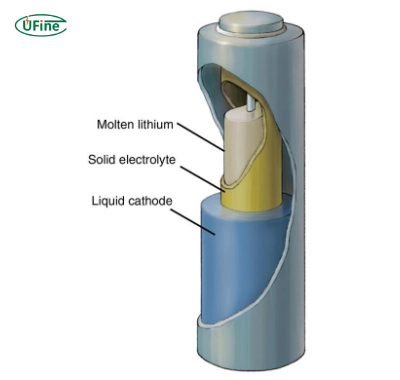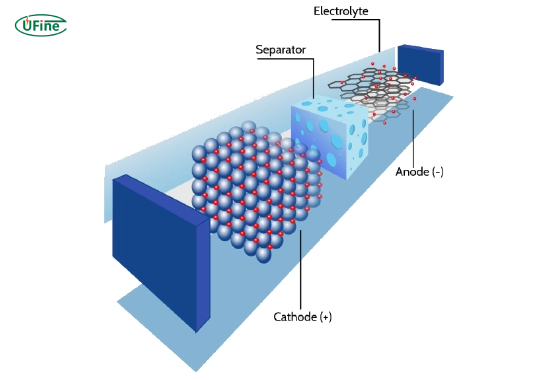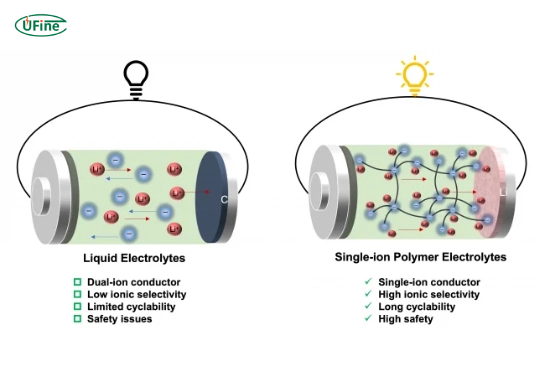Lithium is one of the most essential materials in the modern world. It powers our smartphones, laptops, and electric vehicles. But when we talk about lithium, we often think of it in its solid form. On the other hand, liquid lithium is a fascinating subject gaining more attention in scientific and industrial fields. So, what exactly is liquid lithium, and how does it relate to lithium-ion batteries? This article will explore the unique properties of liquid lithium, its applications, and its connection to the batteries we use daily.
Part 1. What is liquid lithium?
Liquid lithium is simply lithium metal in its molten state. When heated above its melting point, it becomes liquid at 180.5°C (356.9°F). Once in this state, it has unique properties that make it valuable for specific applications.
Unlike solid lithium, researchers and industries primarily use liquid lithium in advanced scientific research and industrial processes rather than everyday products. Scientists and engineers are exploring its potential for nuclear fusion, advanced cooling systems, and next-generation batteries.
Part 2. What are lithium-ion batteries?
Lithium-ion (Li-ion) batteries are rechargeable batteries that power most of our portable devices and electric vehicles. They work by moving lithium ions back and forth between two electrodes: the cathode (positive electrode) and the anode (negative electrode).
Key components of lithium-ion batteries:
- Cathode: Usually made of lithium compounds such as lithium cobalt oxide or lithium iron phosphate.
- Anode: Typically made of graphite, which holds lithium ions during charging.
- Electrolyte: A liquid or gel that allows the lithium ions to flow between electrodes.
- Separator: A thin barrier that prevents the electrodes from touching while allowing ions to pass through.
Manufacturers widely use lithium-ion batteries because they are lightweight, have a high energy density, and can be recharged many times. However, researchers are always looking for ways to make them safer, more efficient, and more sustainable.
Learn About Lithium Battery Electrolyte
Part 3. How does liquid lithium relate to lithium-ion batteries?
Liquid lithium is not used directly in today’s lithium-ion batteries. Still, it plays an essential role in research and innovation. Its unique properties make it a candidate for improving or replacing traditional battery technologies.
Key connections between liquid lithium and lithium-ion batteries:
- Thermal management: Liquid lithium conducts heat very well. It could help cool high-performance battery systems like those in electric vehicles.
- Future battery designs: Scientists are exploring liquid lithium as a core material for advanced batteries like liquid metal or lithium-air batteries. These could offer higher energy storage capacity and faster charging than lithium-ion batteries.
- Electrolyte innovations: Researchers draw inspiration from the properties of liquid lithium to develop safer and more efficient electrolytes for batteries. Although these ideas are still in the experimental stage, they show the potential of liquid lithium to transform energy storage technology.
Part 4. What are the properties of liquid lithium?
Liquid lithium has several unique properties that make it useful in specialized applications. These properties include:
- High thermal conductivity: It transfers heat efficiently, making it useful in cooling systems.
- Low viscosity: Liquid lithium flows easily, which helps in systems where fluid movement is required.
- High electrical conductivity: It conducts electricity effectively, making it ideal for advanced electronics and energy systems.
- Reactivity: Liquid lithium reacts quickly with water, air, and other materials, which can be both an advantage and a safety challenge.
- Low density: Lithium is one of the lightest metals, and its liquid form retains this property, making it useful in weight-sensitive applications.
These properties make liquid lithium different from most other materials and open up possibilities for its use in cutting-edge technologies.
Part 5. What are the challenges of working with liquid lithium?
While liquid lithium has exciting potential, it also comes with significant challenges:
- Reactivity: Liquid lithium reacts violently with water and oxygen. This makes it dangerous to handle without proper precautions.
- Corrosiveness: It can corrode many materials, meaning special containers and equipment are needed to store and work with it.
- High production cost: Producing and maintaining liquid lithium systems can be expensive, limiting its use to niche applications.
- Safety risks: Its high reactivity and the need for extreme temperatures to maintain its liquid state pose risks in industrial and research settings.
Overcoming these challenges is essential for unlocking the full potential of liquid lithium.
Part 6. Current applications of liquid lithium
Liquid lithium is not yet widely used, but it has found applications in several advanced fields:
- Nuclear fusion research: “Scientists use liquid lithium as a coolant and neutron moderator in experimental nuclear reactors. It helps maintain high temperatures and improves reactor efficiency.
- Thermal systems: Its ability to transfer heat makes it worthwhile in systems where efficient cooling is critical.
- Battery research: Scientists are experimenting with liquid lithium in new types of batteries that could outperform today’s lithium-ion batteries.
These applications highlight the versatility of liquid lithium and its potential to drive technological progress.
Part 7. Is liquid lithium the future of energy storage?
Liquid lithium could play a significant role in the future of energy storage. Researchers are particularly interested in its use in:
- Liquid metal batteries: These batteries use molten metals as electrodes and molten salt as the electrolyte. They are durable and scalable and could be ideal for large-scale energy storage, such as renewable energy grids.
- Lithium-air batteries: Liquid lithium could help improve the energy density and efficiency of these batteries, which designers have created to use air oxygen as a reactant.
If these battery technologies become commercially viable, they could surpass traditional lithium-ion batteries in performance and sustainability.
Part 8. How does liquid lithium compare to solid lithium?
Liquid lithium and solid lithium share similar chemical properties, but their physical states make them very different in their use. Here are the key differences:
- Density: Both forms are lightweight, but liquid lithium has an even lower density than solid lithium. This is useful in applications where weight is critical.
- State of matter: Solid lithium is rigid and stable, while liquid lithium is fluid and dynamic.
- Thermal properties: Liquid lithium can handle extreme heat better than solid lithium, making it ideal for high-temperature systems.
- Applications: Solid lithium is widely used in lithium-ion batteries and alloys, while liquid lithium is limited to specialized applications like nuclear research and experimental batteries.
| Property | Solid Lithium | Liquid Lithium |
|---|---|---|
| Density | Low | Even lower in liquid form |
| State of Matter | Solid | Molten |
| Thermal Conductivity | Moderate | High |
| Reactivity | Reactive | Highly reactive |
| Applications | Batteries, alloys | Nuclear research, cooling systems |
These differences highlight how the physical state influences how technology uses lithium.
Part 9. Environmental impact of liquid lithium
The environmental impact of liquid lithium depends on how it is produced and used. Key factors include:
- Mining and extraction: Lithium mining can harm the environment by destroying habitats and consuming large amounts of water.
- Energy use: Keeping lithium in its liquid state requires high temperatures, which can contribute to carbon emissions if powered by fossil fuels.
- Potential benefits: If liquid lithium enables more efficient energy storage systems, it could help reduce reliance on fossil fuels and lower global carbon emissions.
Balancing these impacts is critical to ensuring that liquid lithium contributes to a sustainable future.
Part 10. FAQs
-
What is liquid lithium used for?
Researchers use liquid lithium in nuclear fusion research, advanced cooling systems, and experimental battery technologies. -
Can liquid lithium replace lithium-ion batteries?
Not directly. However, it could inspire new types of batteries or improve existing battery designs through innovations in cooling or electrolytes. -
Is liquid lithium safe to handle?
Workers must handle liquid lithium with specialized equipment and strict safety protocols because it is highly reactive. -
How is liquid lithium produced?
Heat above its melting point of 180.5°C (356.9°F) creates liquid lithium from solid lithium. -
What are the benefits of liquid lithium in batteries?
Liquid lithium offers high thermal conductivity and electrical efficiency, making it a promising material for advanced energy storage systems.
Related Tags:
More Articles

How to Choose the Best Floor Scrubber Battery for Commercial Cleaning?
Selecting the ideal floor scrubber battery ensures a long runtime, rapid charging, and minimal maintenance for efficient commercial cleaning operations.
Battery for Blower vs Battery for Leaf Vacuum: Which One Should You Choose?
Battery for blower vs leaf vacuum—learn the key differences in power, fit, and runtime to choose the right battery for your outdoor tool needs.
How to Choose the Right Battery for Blower?
Choosing the right blower battery? Consider voltage, capacity, chemistry & usage. This guide helps match the best battery for peak performance.
How to Choose the Best Insulated Battery Box for Lithium Batteries?
Choosing the Best Insulated Battery Box for Lithium Batteries? Discover key factors such as size, material, and safety for optimal protection and performance.
7 Critical Elements on a Lithium Battery Shipping Label
What must be on a lithium battery shipping label? Learn 7 key elements to ensure safety, legal compliance, and correct handling across all transport modes.






